The currant family – black, red, pink and whitecurrants – are easy to grow and are just superb to eat during the warm days of summer whether fresh or cooked. Although all of these currants are part of the Ribes family there are two distinct ways of growing them. Blackcurrants are grown as bushes whilst the other currants are more normally grown as multi stem bushes or on a short single leg – and can be grown as bushes, cordons, double cordons or fans. Incidentally these currants bear no relation to the currants used for cooking and are in fact dried grapes!
So let’s first have a look at blackcurrants which as noted are grown as bushes as all new growth arises from beneath ground level. The fruits usually grow in small clusters or on short strigs on one year old wood. Blackcurrants are a very popular soft fruit which have a strong and distinctive flavour and are traditionally grown for jam, cordial and pudding making. Ribena, of course, is a major user of commercially grown blackcurrants in the U.K. Most of the traditional blackcurrants are too stringent to eat raw but the new variety ‘Ebony’ has a very good sweet flavour and is suitable for eating fresh. The more traditional and recommended varieties of blackcurrants are ‘Ben Connan’ (AGM) which produces a compact bush and is therefore suitable for small gardens; ‘Ben Hope’ which is resistant to the blackcurrant gall mite and crops extremely well although it is rather vigorous and ‘Ben Sarek‘ another compact variety with reasonable frost resistance. With these more traditional varieties the flavour of the fruits is somewhat acidic so a reasonable amount of sugar will be required when cooking.
Blackcurrants need a relatively sunny site and before planting ensure that the site is well dug over ideally by double digging to ensure good drainage. Poor soils can be improved by working in plenty of organic matter such as well rotted manure or homemade compost. As the plants can be fairly vigorous it is, perhaps, best to limit your planting to one or two blackcurrant plants – unless you have plenty of space – allowing at least 1.2m (4ft) between them. Plant your blackcurrants around 5cm (2in) below their nursery growing level to encourage good rooting and branch development. Blackcurrants are best planted in the dormant season and after planting you should cut all shoots down to two buds above ground level.
Mature plants will need pruning annually after leaf fall to encourage new wood and this is simply done by removing around a third of the bush either by cutting out some of the older branches to a young shoot near the base or complete branch removal if the bush has become overcrowded with branches.
Red, pink and whitecurrants are grown on a permanent framework as the fruiting buds are produced in clusters at the base of one year old shoots and on short spurs on old wood. To enable this permanent framework, whether it be a cordon or fan, redcurrants are grown on a single short leg. As opposed to blackcurrants, red, pink and whitecurrants have a sweet flavour and are usually eaten raw with the colours used for decorative purposes. These currants tend to grow on long strigs which can act as an ornamental feature in the garden. Mind you, birds find them very attractive too so they will always need to be grown under some form of protection at fruiting time!
There are several outstanding red, pink and whitecurrants to grow and ‘Rovada‘ is one of the very best redcurrants. This is a later than usual ripening redcurrant – usually late July/early August when it has had the benefit of warm sunny weather. The fruits are very large and borne on long strigs and they look so good that this is one of the most popular varieties for exhibition purposes. ‘Jonkheer Van Tets’ (AGM) has been around for quite some time now but it is still a very reliable early fruiting redcurrant which produces good size fruits on long strigs in early July. ‘Gloire de Sablon’ is a very old French pinkcurrant variety which is worth growing for its superb flavour alone. Fairly long strigs of medium size fruits are produced in mid-July and the scent of the fruits is unbelievable – well worth a try. ‘White Versailles’, as the name suggests is a whitecurrant and is well worth growing as it produces long strigs of large, sweet pale yellow fruits. Fruiting starts in early July and will produce fruit over a fairly long period.
As with blackcurrants, red, pink and whitecurrants do need to be planted in a relatively sunny site and will require good drainage. Double digging will really help to increase drainage through lower soil levels – use plenty of organic matter. Planting distances depend on exactly how you are going to grow these currants. As noted earlier you can grow red, pink and white currants as bushes or as cordons which can be grown up a single stake or cane meaning there is no need to devise a complicated supporting structure. If you have a warm wall you might consider growing these currants as fans albeit they are very space consuming.
If growing as a multi stem bush, shorten all stems after planting by about half to encourage a good, strong framework. During the year these shoots will grow upward again and produce side shoots (spurs) and it is on these side shoots that a lot of fruit will develop. In late June/early July cut back the current season’s side shoots to 4 to 5 leaves. In the dormant season prune all of the previously summer pruned side shoots to about 2.5cm (1in) to a bud. Cut the main stems back by a half. Plant bushes 1.2m – 1.5m (4ft – 5ft) apart.
If growing as a cordon you need to cut the central leader back by half after planting to an outward facing bud and all laterals back to 2.5cm (1in) from the main stem to a bud. Remove any laterals completely up to 15cm (6in) from ground level. In late June/early July cut back the current season’s side shoots back to 4 to 5 leaves. Do not cut the leader but ensure that it is tied in to the cane or post. In future years you can develop a simple routine. Each summer at the end of June/early July prune the current season’s growth back to 4 to 5 leaves. Do not prune the leader until it has reached the required height and from then onwards summer prune the leader back to 4 to 5 leaves. Each winter in the dormant season prune all of the previously summer pruned side shoots to about 2.5cm (1in) to a bud. Prune the leader back to a bud leaving just 15cm (6in) of new growth. Once the leader has reached the required height it is also pruned to leave just one bud of the previous summer’s growth. This helps keep the cordon at the required height for a good number of years. Plant cordons around 30cm (1ft) apart.
Growing black, red, pink and whitecurrants is easy and if you can find space for them in the garden they will flourish and provide you with an abundance of fruit each year. So why not have a go?
Gerry Edwards
10th December 2013
Gerry is an experienced amateur fruit grower who is Chairman of the RHS Fruit Group, a member of the Royal Horticultural Society’s Fruit, Vegetable and Herb Committee and also their Fruit Trials Panel. Gerry judges fruit nationally for the Royal Horticultural Society and is also a qualified National Vegetable Society judge.

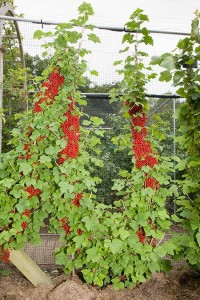
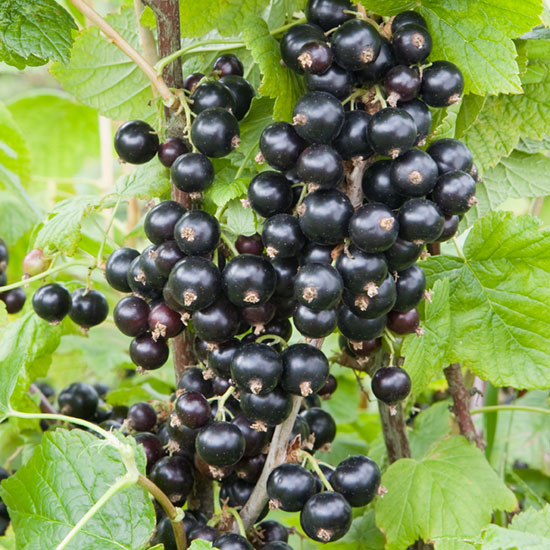
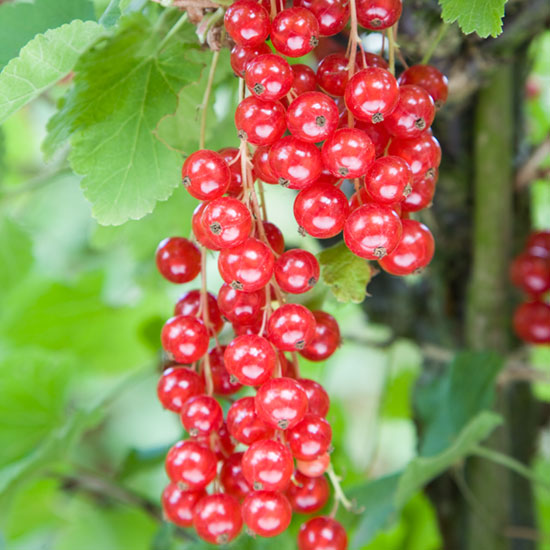
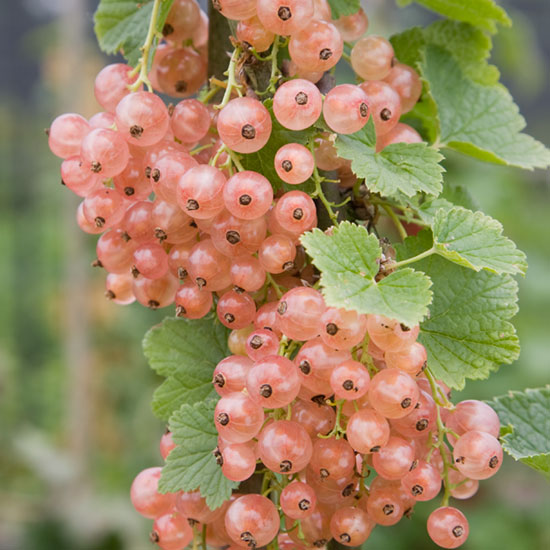
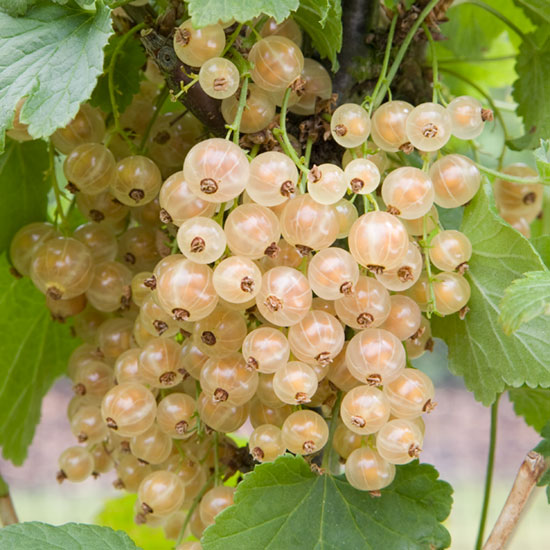
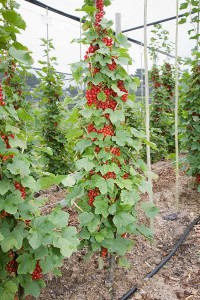
Can currants be grown in a large planter box?
Hi Mimi. Currants can be grown in large containers, the minimum depth of the container should be 12 inches.
hi there looking to see how if tying up black currant bushes will either help or kill the plant? like haystacks with berries showing.
thanks
Hi Holly. Please can you clarify what you are trying to achieve?